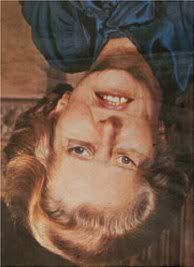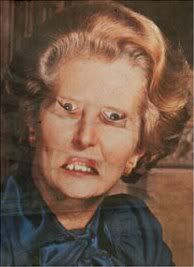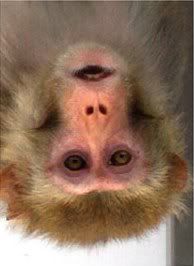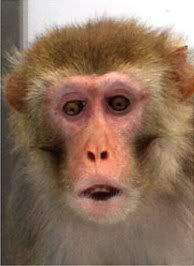
Although something is obviously not quite right about the image, it doesn't look terribly out of the ordinary. It's difficult to pinpoint the abnormality until the image is rotated right-side up.

Right-side up, the image is grotesque. You can now readily notice that although the relative configuration of the eyes and mouth has been maintained, each element has been flipped upside-down. The illusion suggests that we are relatively insensitive to the specific features of a face during recognition (otherwise, the upside-down face would look abnormal). Instead, we rely on the overall configuration of said features. Here's an even more compelling demonstration of the effect using the faces of celebrities (and a little bit of creepy music):
Adachi, Chou, and Hampton (2009) created "Thatcherized" images of rhesus monkey faces.


The researchers presented their monkey subjects with un-Thatcherized images of normal and rotated monkey faces over and over, habituating the monkeys to the images. They then presented a series of Thatcherized images, reasoning that if monkeys perceived abnormalities in the images, they should become dishabituated, spending more time gazing at the new photographs. Just as predicted, only the upright Thatcherized images captured extra attention, replicating the Thatcher effect seen in humans, and suggesting that monkeys use face recognition strategies similar to those used by humans.
References:
Adachi, I., Chou, D. P., & Hampton, R. R. (2009). Thatcher effect in monkeys demonstrates conservation of face perception across primates. Current Biology, 19, 1-4.
Thompson, P. (1980). Margaret Thatcher: A new illusion. Perception, 9, 483-484. (link)







0 comments:
Post a Comment